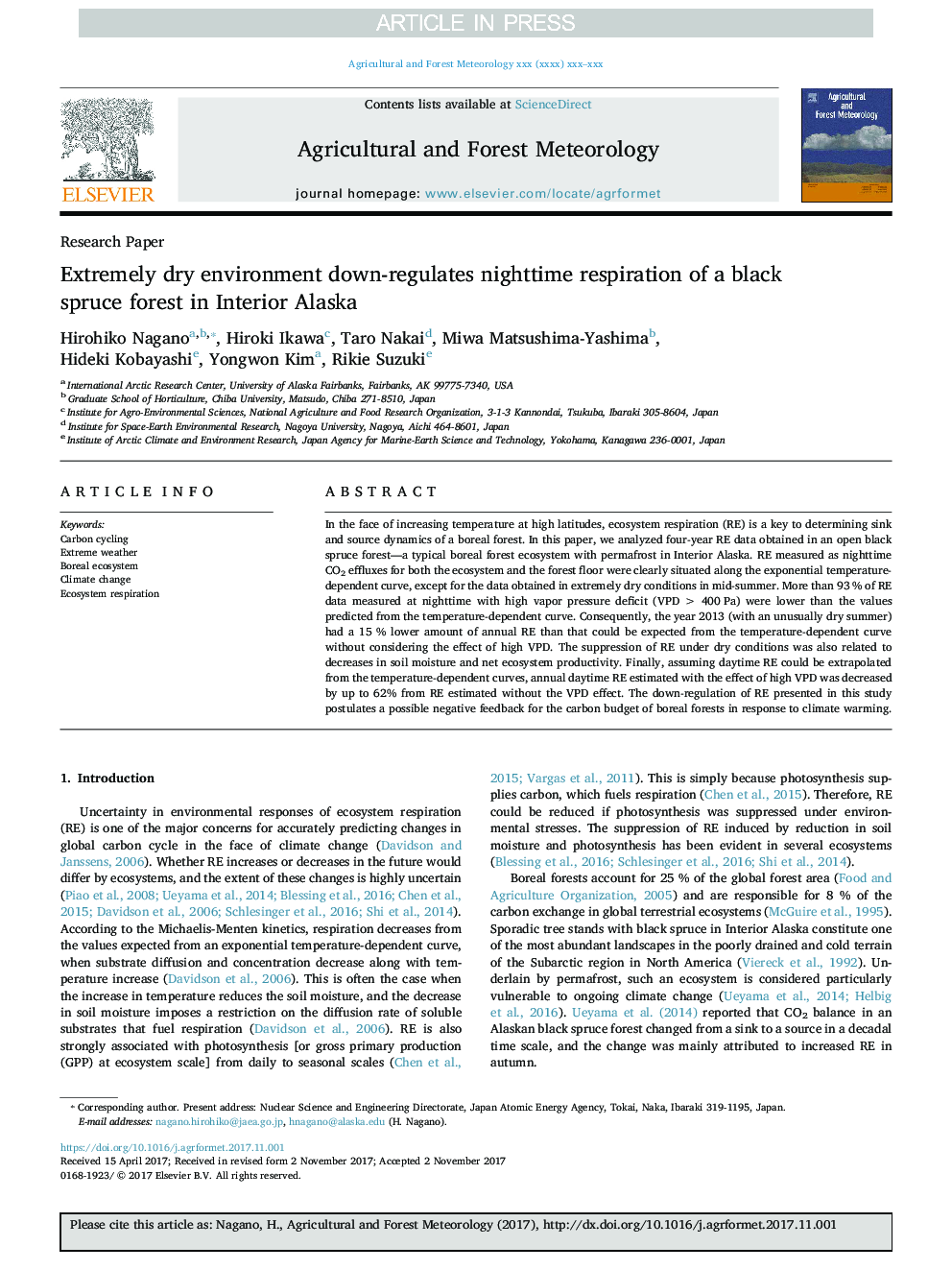| Article ID | Journal | Published Year | Pages | File Type |
|---|---|---|---|---|
| 6536852 | Agricultural and Forest Meteorology | 2018 | 13 Pages |
Abstract
In the face of increasing temperature at high latitudes, ecosystem respiration (RE) is a key to determining sink and source dynamics of a boreal forest. In this paper, we analyzed four-year RE data obtained in an open black spruce forest-a typical boreal forest ecosystem with permafrost in Interior Alaska. RE measured as nighttime CO2 effluxes for both the ecosystem and the forest floor were clearly situated along the exponential temperature-dependent curve, except for the data obtained in extremely dry conditions in mid-summer. More than 93 % of RE data measured at nighttime with high vapor pressure deficit (VPDÂ >Â 400Â Pa) were lower than the values predicted from the temperature-dependent curve. Consequently, the year 2013 (with an unusually dry summer) had a 15 % lower amount of annual RE than that could be expected from the temperature-dependent curve without considering the effect of high VPD. The suppression of RE under dry conditions was also related to decreases in soil moisture and net ecosystem productivity. Finally, assuming daytime RE could be extrapolated from the temperature-dependent curves, annual daytime RE estimated with the effect of high VPD was decreased by up to 62% from RE estimated without the VPD effect. The down-regulation of RE presented in this study postulates a possible negative feedback for the carbon budget of boreal forests in response to climate warming.
Related Topics
Physical Sciences and Engineering
Earth and Planetary Sciences
Atmospheric Science
Authors
Hirohiko Nagano, Hiroki Ikawa, Taro Nakai, Miwa Matsushima-Yashima, Hideki Kobayashi, Yongwon Kim, Rikie Suzuki,
